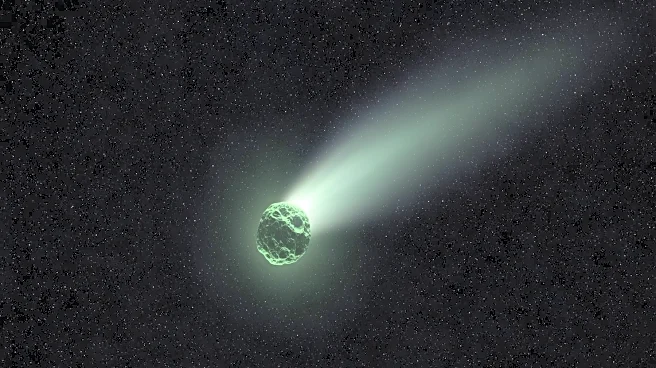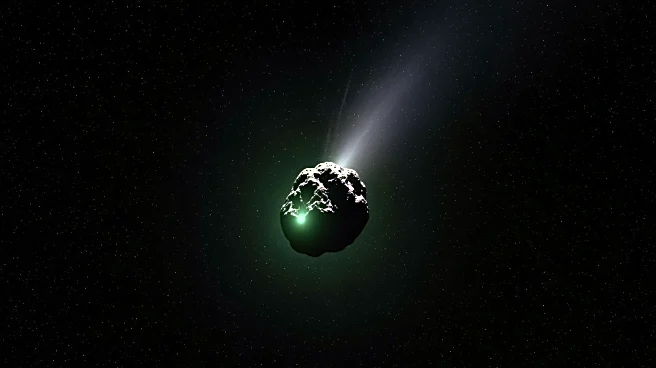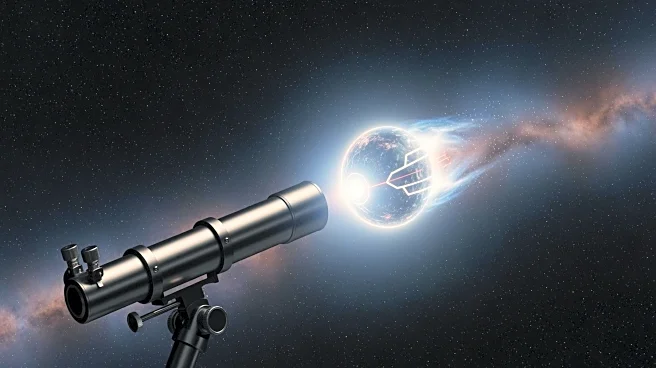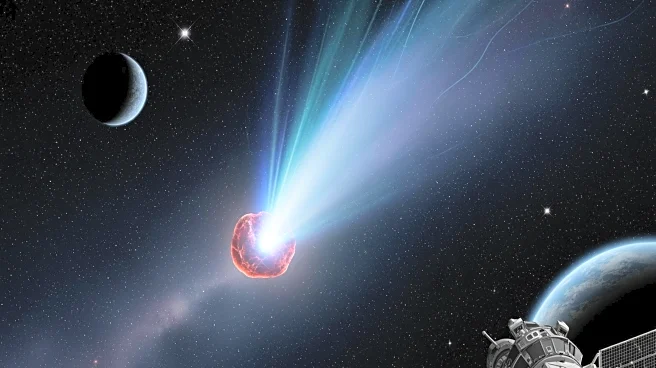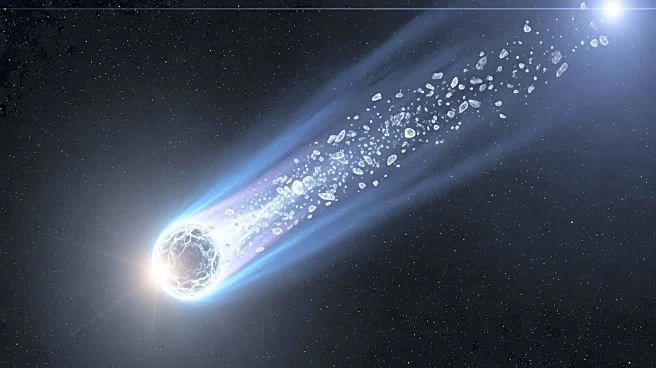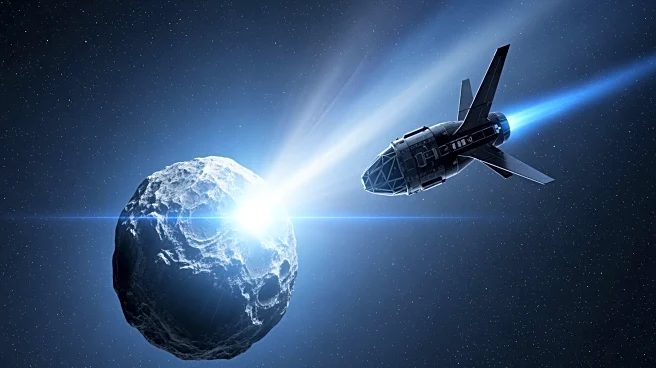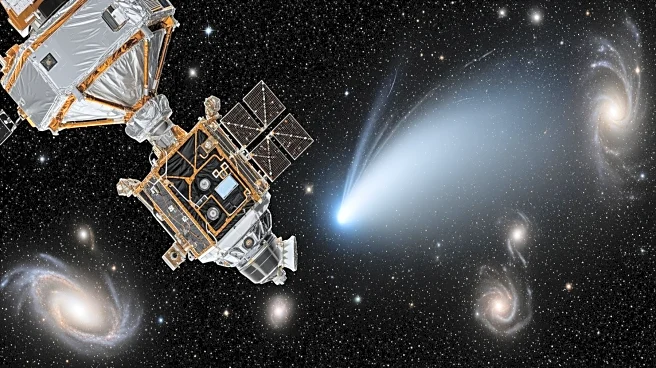What's Happening?
Researchers are closely observing Comet 3I/ATLAS, an interstellar object exhibiting unusual behavior after its closest approach to the Sun. The comet, which passed perihelion on October 29, is glowing
green due to diatomic carbon particles detected by researcher Qicheng Zhang from Lowell Observatory. Despite appearing to lack a dust tail, Zhang explains that the tail is hidden behind the comet, a normal occurrence. The comet has gained attention since its discovery in July, with China's Tianwen-1 orbiter capturing images during its Mars flyby. Harvard astrophysicist Avi Loeb has suggested the comet may be an extraterrestrial probe, citing its non-gravitational acceleration and unusual glow.
Why It's Important?
The study of Comet 3I/ATLAS is significant for understanding interstellar objects and their interactions with our solar system. The comet's unusual characteristics have sparked interest in the scientific community and among the public, with implications for planetary defense and extraterrestrial research. The comet's behavior challenges existing theories about interstellar objects, potentially leading to new insights into their origins and properties. The involvement of international space agencies highlights the global interest in space exploration and the search for extraterrestrial life.
What's Next?
Further observations and studies are expected to continue as scientists seek to understand the comet's properties and behavior. The release of additional data and images by NASA and other space agencies could provide more clues about the comet's nature. Political figures, such as GOP Rep. Anna Paulina Luna, have requested the release of specific observational data, indicating potential policy discussions on space exploration and interstellar research.
Beyond the Headlines
The comet's unusual characteristics have led to speculation about its origins, with some suggesting it could be an alien probe. This raises ethical and philosophical questions about the search for extraterrestrial life and the implications of discovering such objects. The comet's behavior also challenges existing scientific models, potentially leading to advancements in astrophysics and space exploration.
